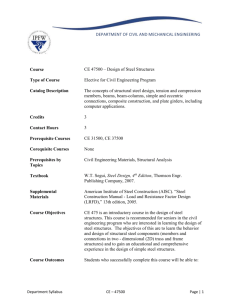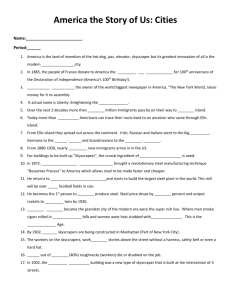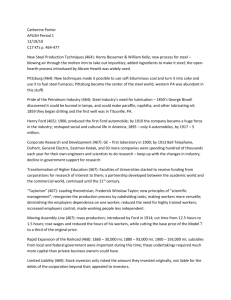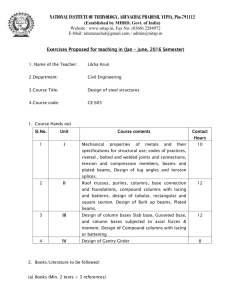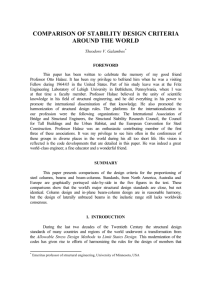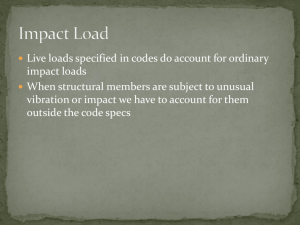COURSE PROFILE Course Number : CE369 Course Title : Steel
advertisement
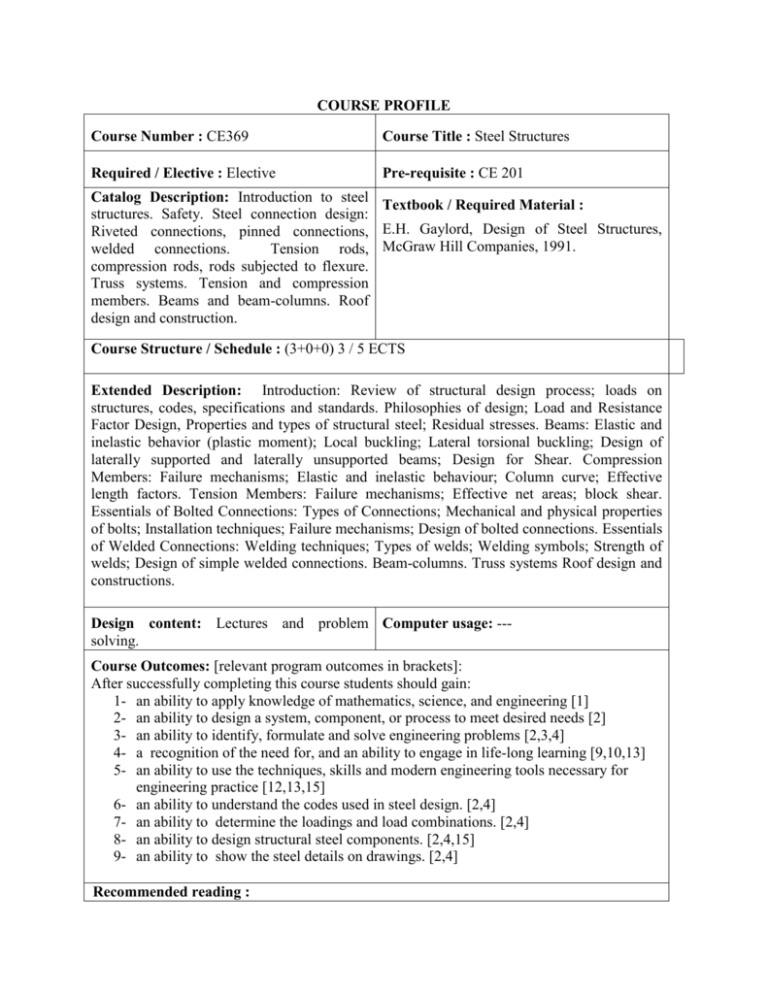
COURSE PROFILE Course Number : CE369 Course Title : Steel Structures Required / Elective : Elective Pre-requisite : CE 201 Catalog Description: Introduction to steel Textbook / Required Material : structures. Safety. Steel connection design: Riveted connections, pinned connections, E.H. Gaylord, Design of Steel Structures, welded connections. Tension rods, McGraw Hill Companies, 1991. compression rods, rods subjected to flexure. Truss systems. Tension and compression members. Beams and beam-columns. Roof design and construction. Course Structure / Schedule : (3+0+0) 3 / 5 ECTS Extended Description: Introduction: Review of structural design process; loads on structures, codes, specifications and standards. Philosophies of design; Load and Resistance Factor Design, Properties and types of structural steel; Residual stresses. Beams: Elastic and inelastic behavior (plastic moment); Local buckling; Lateral torsional buckling; Design of laterally supported and laterally unsupported beams; Design for Shear. Compression Members: Failure mechanisms; Elastic and inelastic behaviour; Column curve; Effective length factors. Tension Members: Failure mechanisms; Effective net areas; block shear. Essentials of Bolted Connections: Types of Connections; Mechanical and physical properties of bolts; Installation techniques; Failure mechanisms; Design of bolted connections. Essentials of Welded Connections: Welding techniques; Types of welds; Welding symbols; Strength of welds; Design of simple welded connections. Beam-columns. Truss systems Roof design and constructions. Design content: Lectures and problem Computer usage: --solving. Course Outcomes: [relevant program outcomes in brackets]: After successfully completing this course students should gain: 1- an ability to apply knowledge of mathematics, science, and engineering [1] 2- an ability to design a system, component, or process to meet desired needs [2] 3- an ability to identify, formulate and solve engineering problems [2,3,4] 4- a recognition of the need for, and an ability to engage in life-long learning [9,10,13] 5- an ability to use the techniques, skills and modern engineering tools necessary for engineering practice [12,13,15] 6- an ability to understand the codes used in steel design. [2,4] 7- an ability to determine the loadings and load combinations. [2,4] 8- an ability to design structural steel components. [2,4,15] 9- an ability to show the steel details on drawings. [2,4] Recommended reading : 1. H. Deren, E. Uzgüder, F. Piroğlu, Ö. Çağlayan, Çelik Yapılar, Çağlayan Kitabevi, 2008. 2. Y. Odabaşı, Ahşap ve Çelik Yapı Elemanları, Beta Yayın Dağıtım, 2004. 3. L.S. Negi, Design of Steel Structures, Tata Mgraw Hill, 2005. Teaching Methods : Lectures, homework, term paper. Assessment Methods: [Related to course outcomes] 2 Midterm Exams [1, 2] (Average) 40% Homework [1, 2, 3, 4, 5] (Average) 10% 3 Quiz (1,2,3) (Average) 10% Final Exam [1] 40% Student workload: Preparatory study 50 hrs Lectures, discussions 40 hrs Homework, term paper 20 hrs Midterms, final 15 hrs TOTAL ……………………………… 125 hrs = 25 x 5 ECTS Prepared by : Esin Inan Revision Date : 7/4/2012

